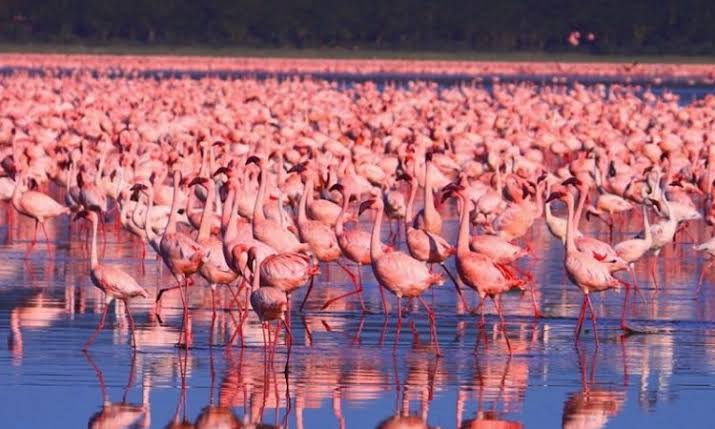Why Kenya’s Lake Nakuru Excites Tourists

By Faridat Salifu
Kenya’s history is characterised by a rich tapestry of cultures and significant events that have shaped its development.
Human habitation in Kenya dates back millions of years, with archaeological discoveries in sites like Olduvai Gorge revealing evidence of early hominids.
Initially populated by hunter-gatherer communities, the region eventually transitioned to farming and pastoral societies.
In the late 19th century, European colonization began, with the British establishing control over Kenya in the early 1900s. This led to substantial changes in land ownership and governance, particularly following the construction of the Uganda Railway, which attracted settlers and displaced local populations.
The 1940s and 1950s saw growing discontent among Kenyans, culminating in the Mau Mau Uprising (1952-1960). This rebellion against colonial rule was pivotal in highlighting the desire for independence and prompted negotiations with the British government.
Independence: Kenya achieved independence on December 12, 1963, with Jomo Kenyatta becoming the first president. The new nation faced challenges, including ethnic divisions and economic disparities that needed to be addressed.
Following independence, Kenya experienced political unrest and economic fluctuations. The late 20th century saw the introduction of multiparty democracy in the 1990s, which allowed for greater political representation and participation.
Today, Kenya is recognized as a regional economic hub, known for its vibrant tourism, agriculture, and technology sectors. While the country has made significant strides, it continues to grapple with challenges such as political tensions and corruption.
Lake Nakuru National Park, located in the heart of Kenya, is a remarkable destination for eco-travelers and wildlife enthusiasts. Famed for its stunning landscapes and vibrant ecosystems, the park draws visitors from around the world, eager to immerse themselves in its natural beauty and diverse wildlife.
One of the park’s most iconic features is its vast flocks of flamingos. At one time, Lake Nakuru was home to over 1.5 million of these stunning birds, making it a breathtaking spectacle.
While numbers have fluctuated in recent years, the lake still supports more than 300 bird species, including pelicans and various migratory waterfowl. Birdwatchers and photographers find endless opportunities to capture these elegant creatures against the backdrop of the shimmering lake.
Beyond its avian life, Lake Nakuru is a designated rhino sanctuary, established in 1983 to protect both black and white rhinos. The park now harbors a healthy population of these majestic animals, providing one of the best locations in Kenya for observing them in their natural habitat.
Conservation efforts have been crucial in safeguarding these rhinos from poaching and habitat destruction, underscoring the park’s role in wildlife protection.
Exploration of Lake Nakuru goes beyond the lake itself. Visitors can venture south to the forested area below Flamingo Hill, a prime spot for spotting lions. Here, lionesses can often be seen lounging in the trees, while elusive leopards may be glimpsed moving gracefully through the underbrush.
This unique opportunity to see these big cats in a relaxed environment adds to the park’s charm.
For those wishing to deepen their connection with nature, guided walking tours are available.
These excursions provide insights into the park’s diverse ecosystems and the intricate relationships among its inhabitants. Engaging directly with the landscape fosters a greater appreciation for the delicate balance of life in this vibrant environment.
Lake Nakuru National Park is more than just a destination; it represents a commitment to conservation and sustainable tourism. The park’s rich biodiversity and striking scenery make it an essential stop for anyone passionate about nature and wildlife preservation.
Whether you are a seasoned traveler or visiting for the first time, Lake Nakuru promises an unforgettable experience that highlights the beauty and importance of protecting our planet’s natural treasures.
